| 10 May |
• yesterday • tomorrow |
| Optional Memorial of Saint Damien de Veuster, Priest |
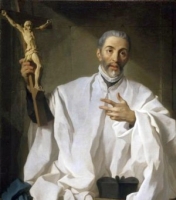
• Apostle of Andalusia
• Juan de Ávila Jijón
Born to a wealthy Castilian family with Jewish ancestry. Studied law at the University of Salamanca from age 14, and felt a call to religious life. Studied theology and philosophy at Alcala, Spain at age 17. Lawyer. Following the death of his parents, he liquidated most of his large fortune, and gave it to the poor. Ordained in 1525. He wanted to be a missionary in the West Indies and Mexico, but became a travelling preacher in Andalusia for 40 years, re-evangelizing a region previously ruled by the Moors. He spoke boldly against the sins of the ruling classes, made powerful enemies, and at one point was imprisoned in Seville, Spain by the Inquisition, accused of false teachings; the charges were dismissed, John was released, and his preaching became more popular than ever. Spiritual director of Saint Teresa of Avila, Saint Francis Borgia, Saint John of God, Saint John of the Cross, Saint Peter of Alcántara, and Saint Louis of Granada. Writer whose works continue their influence today. Declared a Doctor of the Church by Pope Benedict XVI on 7 October 2012.
6 January 1499 at Almodovar del Campo (Ciudad Real), Toledo, New Castile, Spain
• 10 May 1569 at Montilla, Provincia de Córdoba, Andalucia, Spain of natural causes
interred in the Basílica de San Juan de Ávila in Montilla
31 May 1970 by Pope Paul VI
• Andalusia, Spain
• Spain
• Spanish secular clergy
• World Youth Day 2011
Turn yourself round like a piece of clay and say to the Lord: I am clay, and you, Lord, the potter. Make of me what you will. - Saint John of Avila
Withdraw your heart from the world before God takes your body from it. - Saint John of Avila
Your life consists in drawing nearer to God. To do this you must endeavor to detach yourself from visible things and remember that in a short time they will be taken from you. - Saint John of Avila
Dear brothers and sisters, I pray God may open your eyes and let you see what hidden treasures he bestows on us in the trials from which the world thinks only to flee. Shame turns into honor when we seek God's glory. Present affliction become the source of heavenly glory. To those who suffer wounds in fighting his battles God opens his arms in loving, tender friendship. That is why he (Christ) tells us that if we want to join him, we shall travel the way he took. It is surely not right that the Son of God should go his way on the path of shame while the sons of men walk the way of worldly honor: "The disciple is not above his teacher, nor the servant greater than his master." - from a letter by Saint John of Avila
The celebrated John of Avila divides the week into stages of the Passion of Christ:
• Monday think of our Lord's agony in the garden and what passed in the house of Annas and Caiphas
• Tuesday, of the accusations, the removal from judge to judge, and the flagellation
• Wednesday, of the crowning with thorns and the mockery
• Thursday, of the washing of the feet, and the Blessed Eucharist
• Friday, of the sentence, the carrying of the cross, the crucifixion and death
• Saturday, of the piercing of the side, the taking down from the cross, the burial, and the grief of the Blessed Virgin
• Sunday, of the resurrection and the state of future glory. - Illustrated Catholic Family Annual
https://catholicsaints.info/saint-john-of-avila/
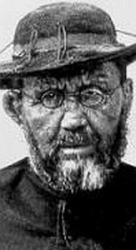
• Apostle to the Lepers
• Damian de Veuster
• Father Damien
15 April (Father Damien Day in Hawaii)
Son of a small farmer. Studied at the college at Braine-le-Comte, Belgium. Joined the Picpus Fathers on 7 October 1860, taking the name Damien. Seminarian in Paris, France. Volunteered for missionary work while still in seminary, and was sent to Hawaii. Ordained in Honolulu on 24 May 1864. Missionary on islands where his single parish was the size of all of his native Belgium. Resident priest in the leper colony on Molokai where for years he worked alone to minister to the patients' spiritual and medical needs. His work turned a wretched dump for the unwanted into a real community with the best treatment of the day, and patients who lived strong spiritual lives. He contracted leprosy in 1885, and though severely crippled by the disease, Father Damien worked until the end.
3 January 1840 on the family farm at Tremeloo, Belgium as Joseph de Veuster
• 15 April 1889 at Molokai, Hawaii from leprosy
• buried next to Saint Philomena Church, Molokai, Hawaii
• interred in a basement chapel in the church of Saint Antonius, Leuven, Belgium in 1936
11 October 2009 by Pope Benedict XVI
• against leprosy
• lepers
Damien of Molokai, by May Quinlan (read online / download in EPub format)
Father Damien, by Father Reginald Yzendoorn (read online / download in EPub format)
The Lepers of Molokai, by Charles Warren Stoddard (read online / download in EPub format)
The Blessed Sacrament is indeed the stimulus for us all, for me as it should be for you, to forsake all worldly ambitions. Without the constant presence of our Divine Master upon the altar in my poor chapels, I never could have persevered casting my lot with the lepers of Molokai; the foreseen consequence of which begins now to appear on my skin, and is felt throughout the body. Holy Communion being the daily bread of a priest, I feel myself happy, well pleased, and resigned in the rather exceptional circumstances in which it has pleased Divine Providence to put me. - Father Damien
https://catholicsaints.info/saint-joseph-de-veuster/
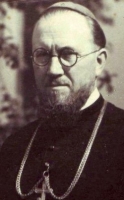
2 June
Drafted into the army in 1917, Vasile fought in the front in Galacia and Italy in World War I. In 1918 he began studying law in Bucharest, Romania, but in 1919 gave into a call to the priesthood and began studying theology at the Pontifical Greek College of Saint Athanasius. Ordained a priest in the Romanian Greek-Catholic rite in Fagaras si Alba Iulia, Romania on 1 January 1926. Taught at the Theological Academy in Blaj, Romania from 1926 to 1934. Dean of the seminary in Bucharest in 1934. Cathedral canon in Blaj in 1937. Rector of the Theological Academy in 1939. Chosen auxiliary bishop of Fagaras si Alba Iulia, Romania and Titular Bishop of Ulpiana by Pope Pius XII on 12 April 1940. Apostolic administrator of Fagaras si Alba Iulia on 15 June 1941. Arrested on 28 October 1948 in the Communist persecutions, he was imprisoned first in the Dragoslavele work camp, and then in February 1949 placed in solitary confinement in the Caldarusani monastery outside Bucharest. Beginning on 10 May 1949, he was subjected to a year of repeated torture which left him mutilated and crippled, broken in his physical and mental health; his faith never flagged. Martyr.
14 June 1899 in Lodroman, Valea Lungã, Alba, Romania
• 10 May 1950 in the prison hospital in Vacaresti, Bucharest, Romania from the abuse from repeated torture sessions, possibly after being shot
• body burned by order of the Communist authorities, and the remains were buried in the Bellu Cemetery in Bucharest
• a white marble grave stone was erected on his grave in 1990; it has become the site of pilgrimage
2 June 2019 by Pope Francis
https://catholicsaints.info/blessed-vasile-aftenie/
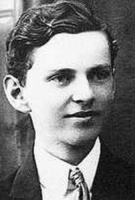
John Merz
Educated in Banja Luka, briefly in a military academy, and in Vienna, Austria. Fought on the Italian front of World War I. After the war he studied again in Vienna, in Paris, France, and then taught French language and literature at the University of Zagreb, from which he received his Ph.D. in philosophy.
Though he decided to remain a layman in the world, Ivan took a vow of celibacy, and devoted his free time to the Church. He taught young Croatians, and spoke and wrote to evangelize all Croats. He worked for liturgical revival, and helped institute Catholic Action in Croatia.
16 December 1896 in Banja Luka, Bosnia and Herzegovina
• 10 May 1928 in Zagreb, Croatia of natural causes
• relics transferred to the Shrine of the Holy Heart in Zagreb on 16 December 1977
22 June 2003 by Pope John Paul II in Bosnia and Herzegovina
Catholic faith is my life vocation. - Blessed Ivan
Why do I love the Church and the Holy Father? Because in the Church I see the clear picture of my beloved Saviour and God Jesus in all His perfection, and in the Holy Father I see the human image of my God and my Lord. - Blessed Ivan
Died in the peace of the Catholic faith. My life had been Christ, and death was my gain. I am expecting the mercy of the Lord and undivided, complete, eternal possession of the most Holy Heart of Jesus. Happy in peace and joy. My soul is reaching the goal for which it had been created. - Blessed Ivan in a testament he wrote just before his death; today it serves as the epitaph on his tomb
https://catholicsaints.info/blessed-ivan-merz/
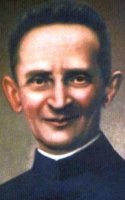
Second of five children born to an upper class family in the Lombard region of modern Italy. A pious young man and good student, he had a mystical outlook on things, and was subject to bouts of depression. At age 18 Enrico felt a call to the priesthood, but his family, especially his father strongly objected. However, they finally relented, and at 24 Enrico began his studies at the seminary in Como, Italy. He studied at the Lombard College and Gregorian University in Rome, Italy, and proved an able student, but a crushing bout of depression sent him back to his family home and finally to a nursing home for recovery.
When he was back on his feet and ready to return to his studies, Enrico re-examined his call to religious life, and, with the help of his confessor, decided to work with the Camillians, a congregation dedicated to the sick; he began his novitiate at age 27. With special dispensation from his bishop, the future Pope Saint Pius X, he was ordained a priest on 14 April 1889. He ministered to the sick in Verona, Italy from 1889 to 1899, making his solemn Camillian vows in 1891, and then served at the San Camillo di Cremona nursing home the rest of his life – almost 40 years. He served as treasurer of his community for 34 years, and superior for 11. Father Enrico’s life was one of prayer and service in the day to day needs of other people.
28 April 1860 at Gravedona, Como, Italy
10 May 1938 in Cremona, Italy of pneumonia
4 May 1997 by Pope John Paul II
https://catholicsaints.info/blessed-enrico-rebuschini/
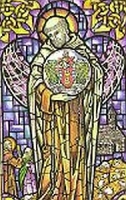
6 January as one of the Twelve Apostles of Ireland
Son of Sedna. Soldier. Spiritual student of Saint Fintan of Clonenagh and Saint Kieran at Clonmacnoise. Friend of Saint Brendan, Saint Cormac, Saint Kevin of Glendalough and Finbarr of Moville. Ordained by Saint Lughaedh of Conmacnoise. Spiritual teacher of Saint Cronan Mochua. He and a few brother monks lived a very strict and austere life on an island on Lough Erne. Among other houses, he founded the monastery at Bangor, County Down, Ireland in 552 and served as its first abbot; at one point it housed 8,000 monks. Life there was harsh and adherence to the Rule strict, but the brothers were very close, and were encouraged to help and support each other. Spiritual teacher of Saint Blane, Saint Cainnech, Saint Columbanus, Saint Deicola, Saint Fintan of Doon, Saint Gall, Saint Lactali, Saint Lua of Limerick and Saint Mochoemoc. Missionary to Scotland and the Picts. A reported miracle worker, Comgall is said to have blinded a band of thieves as they approached the monastery, but restored eye sight to a penitent man. Received Holy Communion on his death bed from Saint Fiacra.
c.510 Dalaradia, near Magheramorne, County Antrim, Ireland
601 at Bangor Abbey, Ireland of natural causes
1903 (cultus confirmed)
• abbot holding a stone, to whom an angel brings a fish
• fish
• pebble
• stone
https://catholicsaints.info/saint-comgall-of-bangor/

• Solange of Berry
• Solange of Bourges of Genevieve du Berry
• Solangia...
Born to a family of poor vine dressers. Young virgin shepherdess who took a personal vow of chastity, devoting herself to God alone. When she said her prayers in the field, a star shone over her head. Reported to have the gift of healing, especially of animals. She was murdered by her landlord, Bernard, son of the Count of Poitiers, for resisting his sexual advances. Considered a martyr as she died insisting on her fidelity to Christ. Some of the early versions of her story include her carrying her severed head into a nearby village, and the head preaching to the people.
863 at Villemont near Bourges, France
stabbed with a hunting knife c.880 at Champ de Sainte Solange
• Berry, France
• Bourges, France
• children
• drought relief
• for rain
• rape victims
• shepherdesses
• shepherds
• cross
• distaff
• flowers
• girl carrying her severed head
• girl with a hunting knife in her throat
• girl with a knife in her breast
• shepherdess in prayer
• shepherdess near a crucifix
• shepherdess with a star over her head
• sheep
https://catholicsaints.info/saint-solange-of-bourges/
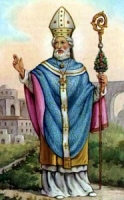
• Catald of Tarentum
• Catald of Rachau
• Cataldus, Cathal, Cattaldo, Cathaluds, Cathaldus, Cataldo
Student at the monastic school of Lismore, Waterford under Saint Carthage. Later a teacher there, and then headmaster. Pilgrim to the Holy Land. On his way home a storm shipwrecked him in Taranto, Italy. As he recovered, his holiness was such that he was chosen by the people to be their bishop. He lived the rest of his life in the region, teaching and caring for his parishioners. There are towns in Sicily and southern Italy named for him.
7th century Munster, Ireland
• c.685 in Taranto, Italy of natural causes
• relics discovered centuries after his death during a renovation of the cathedral following its damage by Saracens in 927
• relics translated on 10 May 1017
• remarkable cures reported almost immediately at his new tomb
• against blindness
• against drought
• against epilepsy
• against hernias
• against paralysis
• against plague
• against storms
• blind people
• drought relief
• epileptics
• paralyzed people
• Massa Lubrense, Italy
• Taranto, Italy
https://catholicsaints.info/saint-catald-of-taranto/
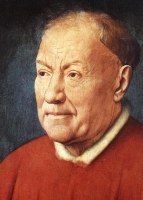
Studied law. Carthusian monk in 1394. Prior of several Carthusian houses. Ordained in June 1404. Chosen as reluctant bishop of Bologna, Italy on 5 January 1417. Papal diplomat with missions to France and Lombardy, Italy. Archbishop of Bologna in 1418 against his will. Elevated to cardinal-priest of Santa Croce in Gerusalemme on 24 May 1426. Known as a peacemaker. Mediated between the emperor and Pope Martin V, and the French king and Pope Eugene IV. Prominent in the Council of Basel and Council of Ferrara-Florence. Active in the negotiations that brought reunion of the Greek Church with Rome at Ferrara-Florence. Generous patron of learned men. Wrote several theological treatises, and encouraged academics. Chief penitentiary to Pope Eugene IV. Archpriest of the Basilica of Saint Mary Major in 1440.
1373 at Bologna, Italy
• 9 May 1443 at Siena, Italy of natural causes
• buried at the Carthusian monastery in Florence, Italy
25 September 1744 by Pope Benedict XIV (cultus confirmed)
learning
Carthusian wearing a cardinal's hat and cape over his habit
https://catholicsaints.info/blessed-nicholas-albergati/
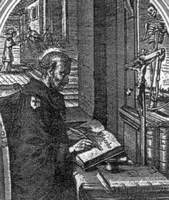
• Amalarius of Trier
• Fortunatus, Symphosius
• 29 April (Martyrologium Hieronymianum)
• 10 June (Trier, Germany)
Ninth-century liturgical writer. A pupil of Alcuin at Aix-la-Chapelle, Germany, he was bishop of Trier, Germany from 811 to 813, and later ambassador to Constantinople. He lived at a time when the liturgy was changing, when fusion of the Roman and Gallican uses was taking place, and he exercised a remarkable influence in introducing the present composite liturgy which has supplanted the ancient Roman Rite. The chief merit of his works is that they have preserved much accurate and valuable information on the state of the liturgy at the beginning of the ninth century and are therefore useful sources for the history of Latin rites.
775 in Metz, Kingdom of the Franks (in modern France)
c.853
https://catholicsaints.info/blessed-amalarius-of-metz/
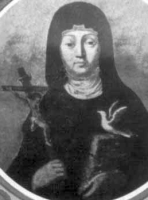
Born to the dynastic house of Este. Aunt of Blessed Beatrix of Este the Younger. Nun in the convent of Santa Margherita at Solarolo, Italy. Feeling a need for more seclusion, she took over a deserted monastery at Gemmola, Italy, and founded a new convent where she apparently spent the rest of her life.
between 1200 and 1206 in the castle of d'Este, Italy
• 10 May 1226 of natural causes at Gemmola, Italy
• interred in the church of Saint John the Baptist
• relics translated to the church of Saint Sophia in Padua, Italy in 1578
• tradition says that when anything important was about to befall the family of Este, Beatrix would turn in her grave, and the noise could be heard throughout the church
19 November 1763 by Pope Clement XIII
https://catholicsaints.info/blessed-beatrix-of-este-the-elder/
Aurélien Cotta
Spiritual student of Saint Martial of Limoges. Priest. Second bishop of Limoges, France, succeeding Martial.
One legend says that Aurelian was a pagan priest who opposed the Christian evangelism of Saint Martial. Struck by lightning for his opposition, Aurelian died, but was brought back to life by the prayers of Saint Martial. Aurelian saw the error of his way, and converted to Christianity.
• relics re-discovered in the Saint-Cessateur parish church outside the walls of Limoges, France
• relics re-enshrined at the Chapelle Saint-Aurelian, inside the city walls of Limoges in the late 15th century
• this was an area with many working butchers who chose Aurlian as their patron; the brotherhood still exists and still maintains the chapel that houses the relics
butchers of Limoges, France
https://catholicsaints.info/saint-aurelian-of-limoges/
• 2nd Friday in May
• 21 May on some calendars, possibly based on the first enshrinement of his relics
As a young man, Miro gave all that he owned to the poor and retired to live as a hermit around Lake Como, first near Canzo, then near Sorigo. He may have joined the Franciscan tertiaries, but records are scant and vary. For generations the people around the lake knew him for his piety and wisdom.
c.1306 in Canzo, Lake Como, Italy
• 1381 in Sorigo, Lake Como, Italy of natural causes
• buried in the church of San Michele in Sorigo; it was later renamed San Miro
• relics enshrined on 10 September 1452
• relics re-enshrined in 1837
• relics re-enshrined in 1932
https://catholicsaints.info/blessed-miro-of-canzo/
Born to the Frankish nobility, the son of Magafredo, Frodoino became an oblate, then a monk, and then on 10 February 773 he was chosen abbot at the monastery of Saints Peter and Andrew in Novalesa, Italy; he served as abbot for 43 years. Friend of Blessed Charlemagne who became a supporter of the abbey. Under Frodoino’s leadership, the house expanded and became a center of learning, known for its Scripture copyists and collection of holy relics, and he was personally known for his dignity and piety.
latter 8th century
816 of natural causes
https://catholicsaints.info/saint-frodoino-of-novalesa/
Calepodio
Priest. Martyred in the persecutions of Emperor Alexander Severus. One of the Roman catacombs is named for him.
• stabbed with a sword c.232 in Rome, Italy
• his body was dragged through the streets of Rome and then thrown into the River Tiber
• body later recovered and given proper burial by Pope Callistus I
• relics enshrined in the church of Santa Maria in Trastevere, Rome in the 10th century
• some relics enshrined in the church of Notre-Dame de Reims, Rheims, France
https://catholicsaints.info/saint-calepodius-of-rome/
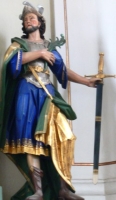
• Gordian of Rome
• Gordianus...
Roman judge. Adult convert to Christianity. Tortured and martyred by order of the Roman prefect Apronianus during the persecutions of Julian the Apostate.
• beheaded in 362 on the Latin Road outside Rome, Italy
• buried with Saint Epimachus in a crypt near Rome
• relics at the Basilica of Saint John Lateran, Rome, Italy, and at Kempten Abbey,Bavaria, Germany
https://catholicsaints.info/saint-gordian-the-judge/
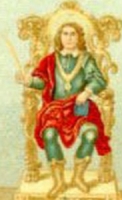
Alfio
Brother of Saint Cyrinus and Saint Philadelphus. Martyred in the persecutions of Decius.
Sicily, Italy
251 in Lentini, Sicily, Italy
• Lentini, Sicily, Italy
• Trecastagni, Sicily, Italy
https://catholicsaints.info/saint-alphius-of-lentini/
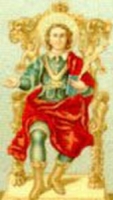
Cirino
Brother of Saint Alphius and Saint Philadelphus. Martyred in the persecutions of Decius.
Sicily
251 in Lentini, Sicily, Italy
• Lentini, Sicily, Italy
• Trecastagni, Sicily, Italy
https://catholicsaints.info/saint-cyrinus-of-lentini/
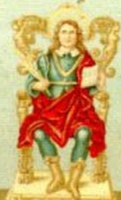
Brother of Saint Alphius and Saint Cyrinus. Martyred in the persecutions of Decius.
Sicily, Italy
251 in Lentini, Sicily, Italy
• Lentini, Sicily, Italy
• Trecastagni, Sicily, Italy
https://catholicsaints.info/saint-philadelphus-of-lentini/
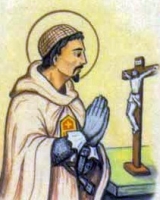
Born to the nobility. Secular Mercedarian knight. Ransomed 200 Christian slaves from the Saracens in Muslim occupied Granada, Spain in 1284.
France
Mercedarian convent of Saint Anthony the Abbot, Tarragona, Spain
https://catholicsaints.info/blessed-giusto-santgelp/
Roman imperial consul. Martyred with his wife, children and 42 members of his household, whose names have not come down to us, in the persecutions of Emperor Alexander Severus.
• beheaded c.232 in Rome, Italy
• heads of all the martyrs were placed over the gates of Rome as a warning to other Christians
https://catholicsaints.info/saint-palmatius-of-rome/
Roman imperial senator. Martyred with 68 members of his household, whose names have not come down to us, in the persecutions of Emperor Alexander Severus.
• beheaded c.232 in Rome, Italy
• heads of all the martyrs were placed over the gates of Rome as a warning to other Christians
https://catholicsaints.info/saint-simplicius-of-rome/

Old Testament Patriarch. The man "simple and upright and fearing God and avoiding evil" who figures in the canonical Old Testament Book of Job.
• against abscesses
• against depression
• against ulcers
• ulcer sufferers
https://catholicsaints.info/job/
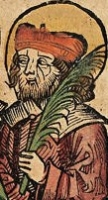
Martyred in the persecutions of Decius.
• burned at the stake c.250 in Alexandria, Egypt
• relics transferred to a crypt near Rome, Italy
https://catholicsaints.info/saint-epimachus-of-rome/
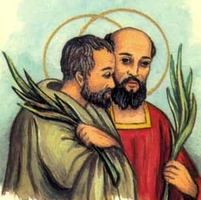
Martyr.
Capua, Italy
• martyred at Rome, Italy, date unknown
• relics enshrined at Capua, Italy
https://catholicsaints.info/saint-quartus-of-capua/

Martyr.
Capua, Italy
• martyred at Rome, Italy, date unknown
• relics enshrined at Capua, Italy
https://catholicsaints.info/saint-quintus-of-capua/
Married to Saint Blanda of Rome. Martyred in the persecutions of Emperor Alexander Severus.
• beheaded c.232 in Rome, Italy
• head placed over a gate into Rome as a warning to other Christians
https://catholicsaints.info/saint-felix-of-rome-10-may/
Married to Saint Felix of Rome. Martyred in the persecutions of Emperor Alexander Severus.
• beheaded c.232 in Rome, Italy
• head placed over a gate into Rome as a warning to other Christians
https://catholicsaints.info/saint-blanda-of-rome/
May have been a Benedictine monk. Priest. Hermit at Pontoise, France.
England
c.1195 of natural causes
https://catholicsaints.info/blessed-william-of-pontoise/
Lay Franciscan.
c.1310 in Norcia, Italy of natural causes
https://catholicsaints.info/blessed-antonio-of-norcia/
Martyr.
at Smyrna, Asia Minor
https://catholicsaints.info/saint-dioscorides-of-smyrna/
Martyr.
https://catholicsaints.info/saint-thecla-10-may/
• Frodoino
CatholicSaints.Info Portable Edition